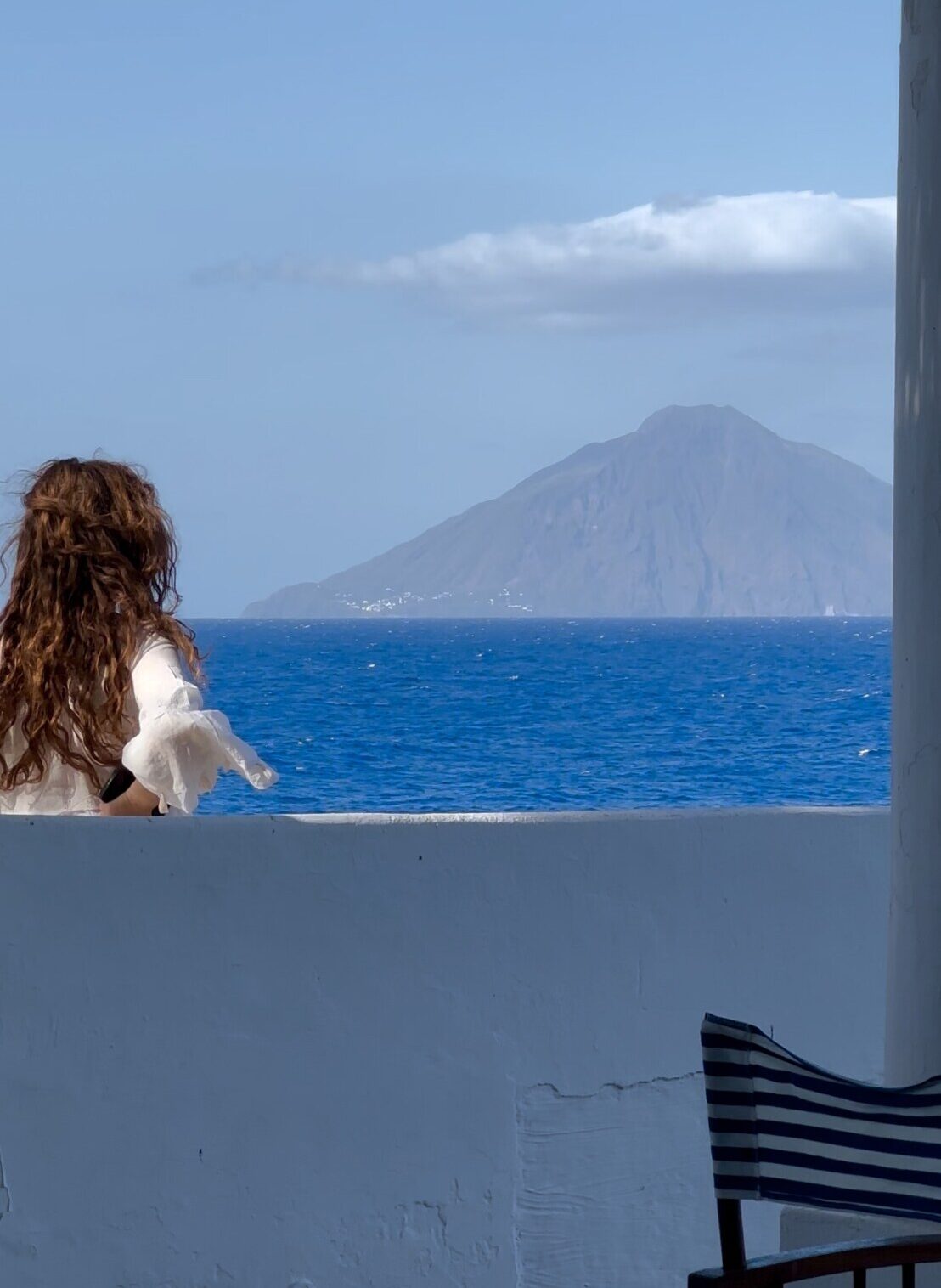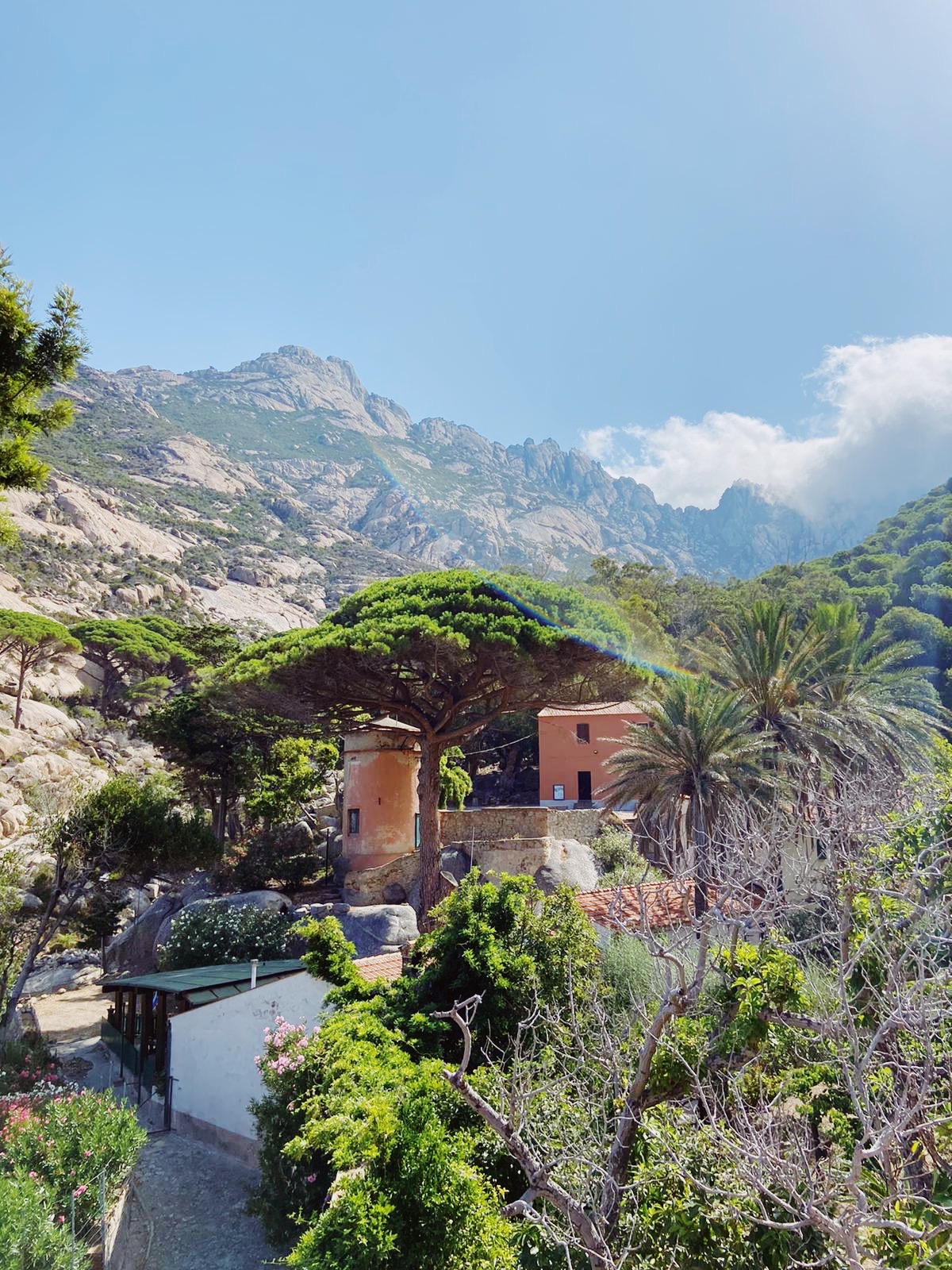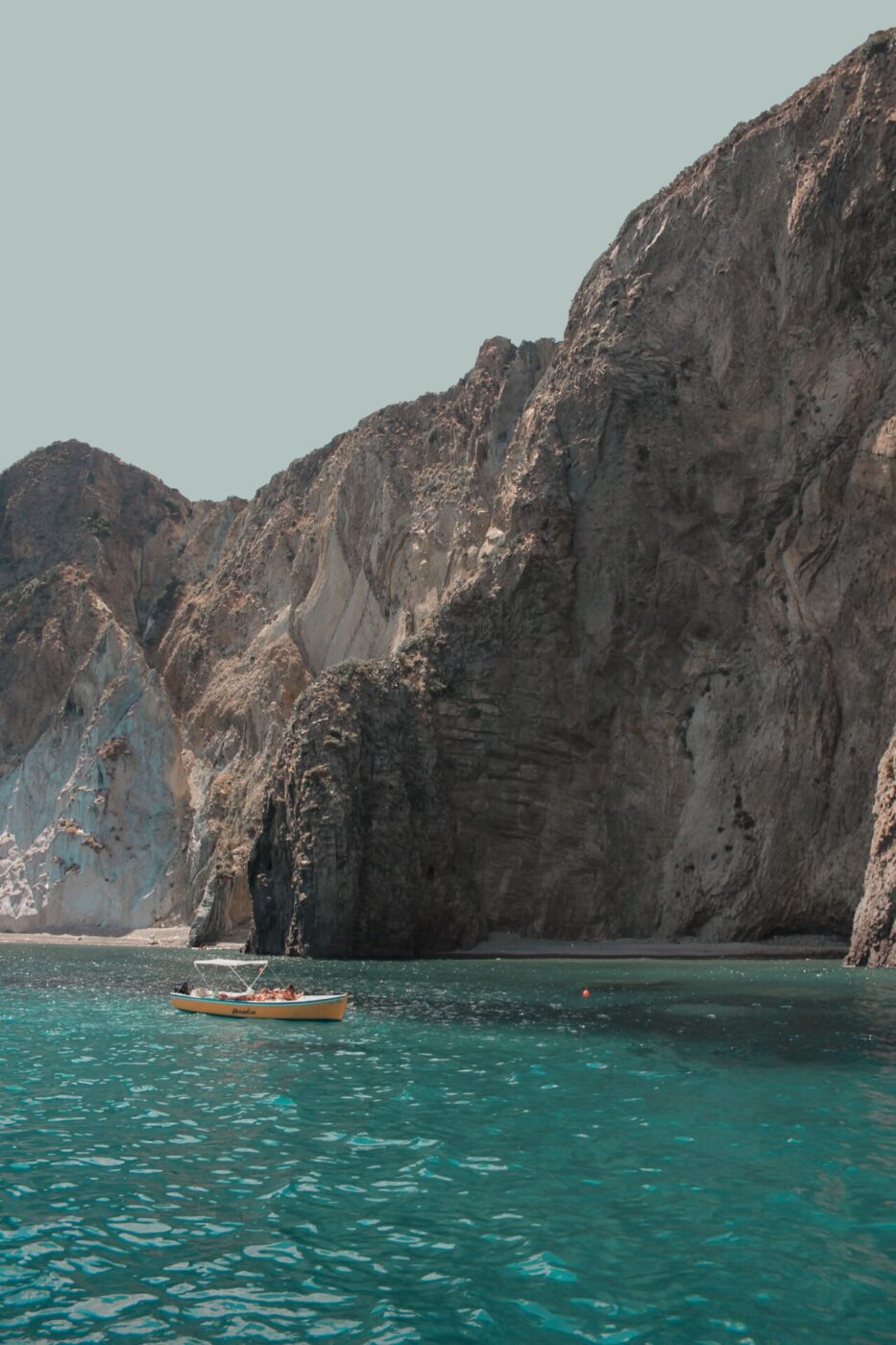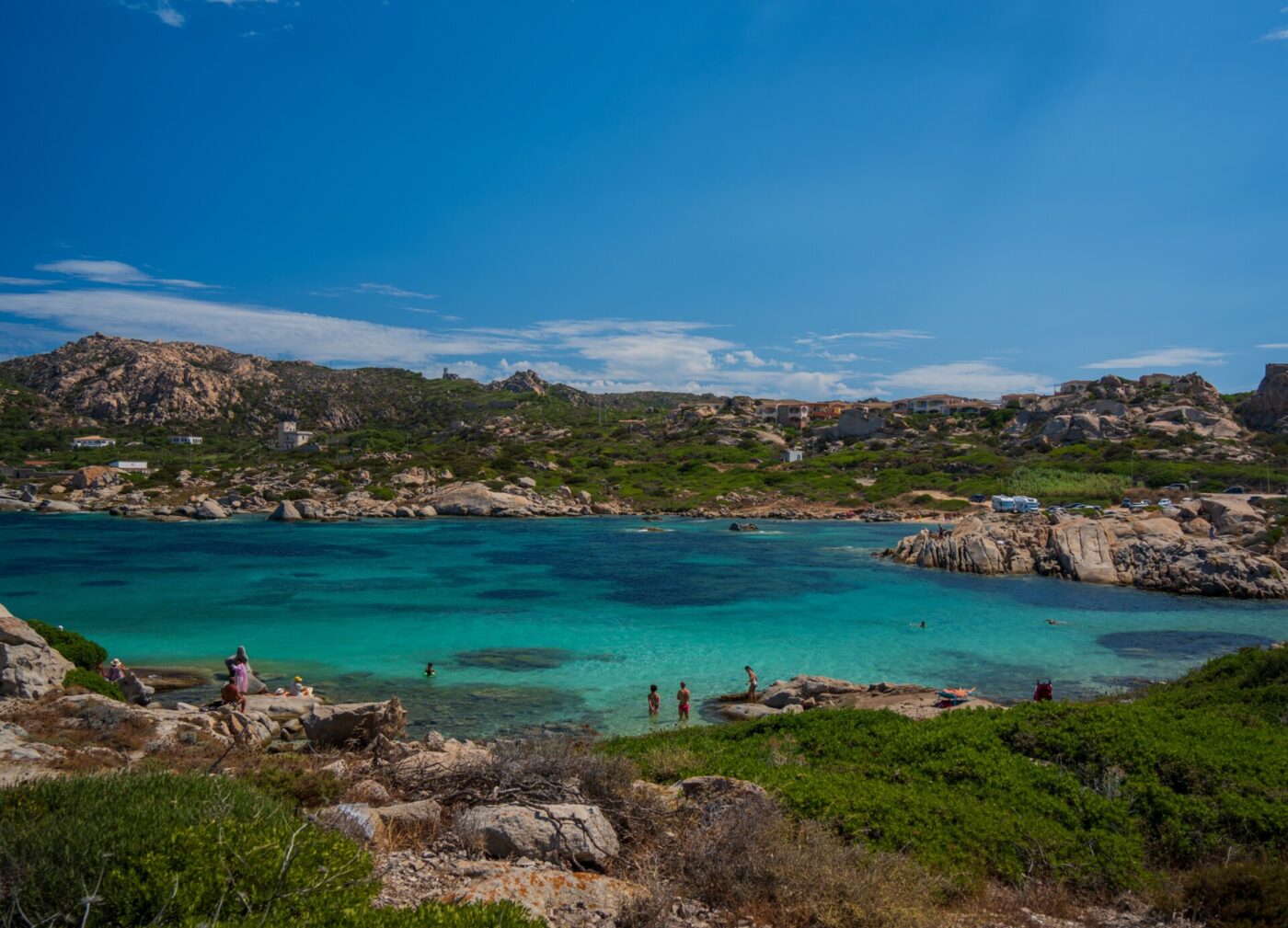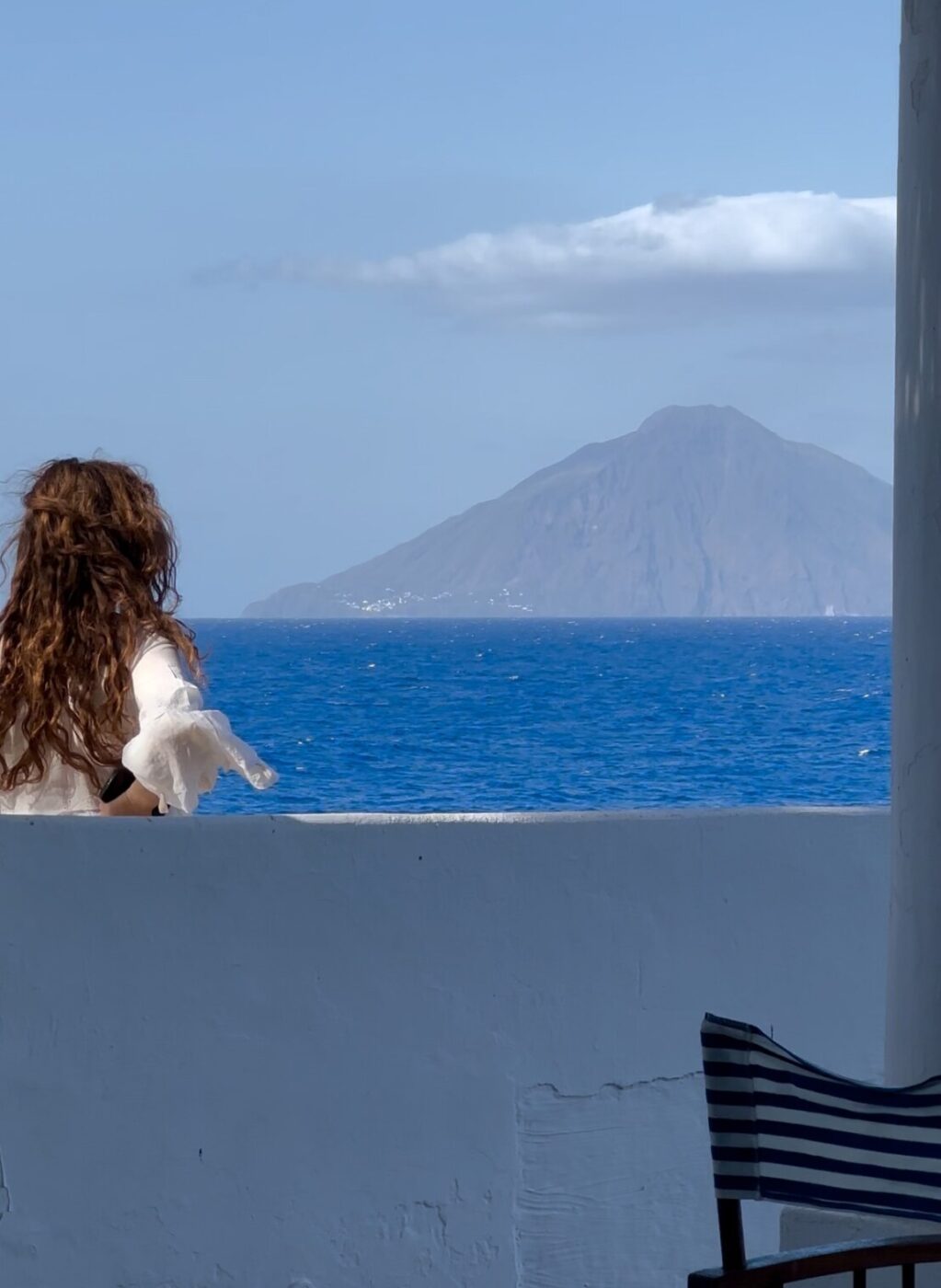It was the water that struck me first–the color was almost electric, a blue-green so transparent you could see to its very depths. We had come upon the semi-enclosed cove by boat after passing through a rocky tunnel. Emerging into the craggy grotto felt nothing short of miraculous, with the sun beaming angelic rays of light all around us as if by design. My friend and I dove into the water, so enthused we forgot to consider its frigid temperature. It was one of those moments I knew instantly would register as a capital C, capital M Core Memory.
For any of us who have chartered a boat from one of Italy’s most visited islands to a nearby uninhabited one, this tableau is likely familiar. In fact, it’s one you may have experienced summer after summer, craving that distinct pleasure of surfacing in a body of water largely untouched by human life.
It’s also a serious from living in one of Italy’s major cities in the hottest months, when historic centers become overrun with tourists. The country was the fifth most visited internationally in 2019, after France, Spain, the United States, and China. In 2019, 65 million tourists came to Italy. To leave that chaos and come to a place where not a single person lives, not one, prompts a sort of recalibration of the soul.
Italy’s islands are already a popular choice for summer vacations, and there are plenty to choose from–450 in all. Almost 11% of Italy’s population–more than 6.5 million people–live on an island, according to the European Commission. And while it’s hard to say how many of those 450 islands are without full-time residents, a Wikipedia list puts the total at around 147.
Although these deserted islands may seem like ideal vacation spots–a real place to get off the grid and away from it all for a while–they are usually uninhabited for good reason: lack of infrastructure. It bears repeating that this is a problem in much of Italy. More than 2,500 towns in the country are “perilously depopulated”, and it’s part of the reason towns like Presicce, in Puglia, will pay homebuyers 30,000 euros to buy the area’s run-down houses. In other parts of Italy, abandoned homes routinely go for 1 euro. In Roscigno Vecchia, a small town in Campania, one man has been the sole inhabitant for 25 years. In Italy, isolation is an art form ingrained into the very terrain on which we live.
As if to prove this very point, Italy’s uninhabited islands have made their mark on the country’s history, as spots of both exile and intrigue. Nero’s first wife was sent to modern-day Ventotene for committing adultery with the emperor’s tutor–whether it actually happened or not, we don’t know. Napoleon was famously exiled to the island of Elba, off the Tuscan coast, and in Alexandre Dumas’ The Count of Monte Cristo, Edmond Dantès finds the fateful treasure on the eponymous uninhabited island. Venice’s Poveglia was a quarantine island for plague sufferers–when they died, they were burned and buried on the very island. Rumors claim 50% of the soil contains human remains.
But beyond legend and myth, beyond the exile of history’s most famous figures, today, Italy’s uninhabited islands represent something unspoiled and still wild about this country.
They are a chance to interact, if only for the day, with a way of life increasingly hard to find.

Monte Cristo
Palmarola/Zannone (Lazio)
When tourists come to Ponza–a small, Lazian island of 3,000 people–Cesare de Luca, a born-and-bred Ponzese, says there is something they absolutely must do: a jaunt to Palmarola and, time willing, Zannone, another one of the Pontine Islands in the Tyrrhenian Sea between Rome and Naples.
Palmarola is perhaps most famously known as the site of exile for Saint Silverio, Ponza’s patron saint who became pope in 536 AD. The island even bears a cliff face in his name with a small chapel at the top where he would have lived. But it’s not Silverio that attracts so many tourists. Instead, it’s the island’s array of idyllic swimming spots, grottos entered from one end and exited from another. Legend even says this was the very island where Ulysses tied himself to the mast of his ship to survive the enchanting song of the Sirens.
“The most beautiful island,” De Luca calls Palmarola. “There are 10 houses there, and when you go in the water, it’s like the Caribbean. If you come to Ponza on vacation and you don’t go to Palmarola, you have to come back.”
Despite its obvious appeal, the vast majority of tourism on Ponza–and, it follows, on Palmarola and Zannone–is comprised of Italians, according to De Luca. While Palmarola does have a restaurant, it’s not possible to really traverse the island. Zannone, on the other hand, has hiking paths and is part of the Parco Nazionale del Circeo. Unlike the other Pontian islands, Zannone is full of vegetation and is a paradise for birds. The island is bedecked with typical myrtle and wild olive and has a small colony of mouflons, or wild sheep, that were brought to the island in the 1920s from Sardinia.
In general, outings for the day are conducted to either Palmarola or Zannone, rather than both at once, although each is less than 10 km from Ponza. And their aforementioned lack of infrastructure means that they can only be reached when certain weather conditions are met. De Luca has never had to stay trapped for hours on Palmarola or Zannone because boat captains are attuned to the weather–if there’s even an indication of storms, they won’t go, he says. It creates the perfect environment for the islands’ continued isolation.
“Since they are uninhabited, they must remain like that. That is their value,” De Luca says. “Leave them as they are.”
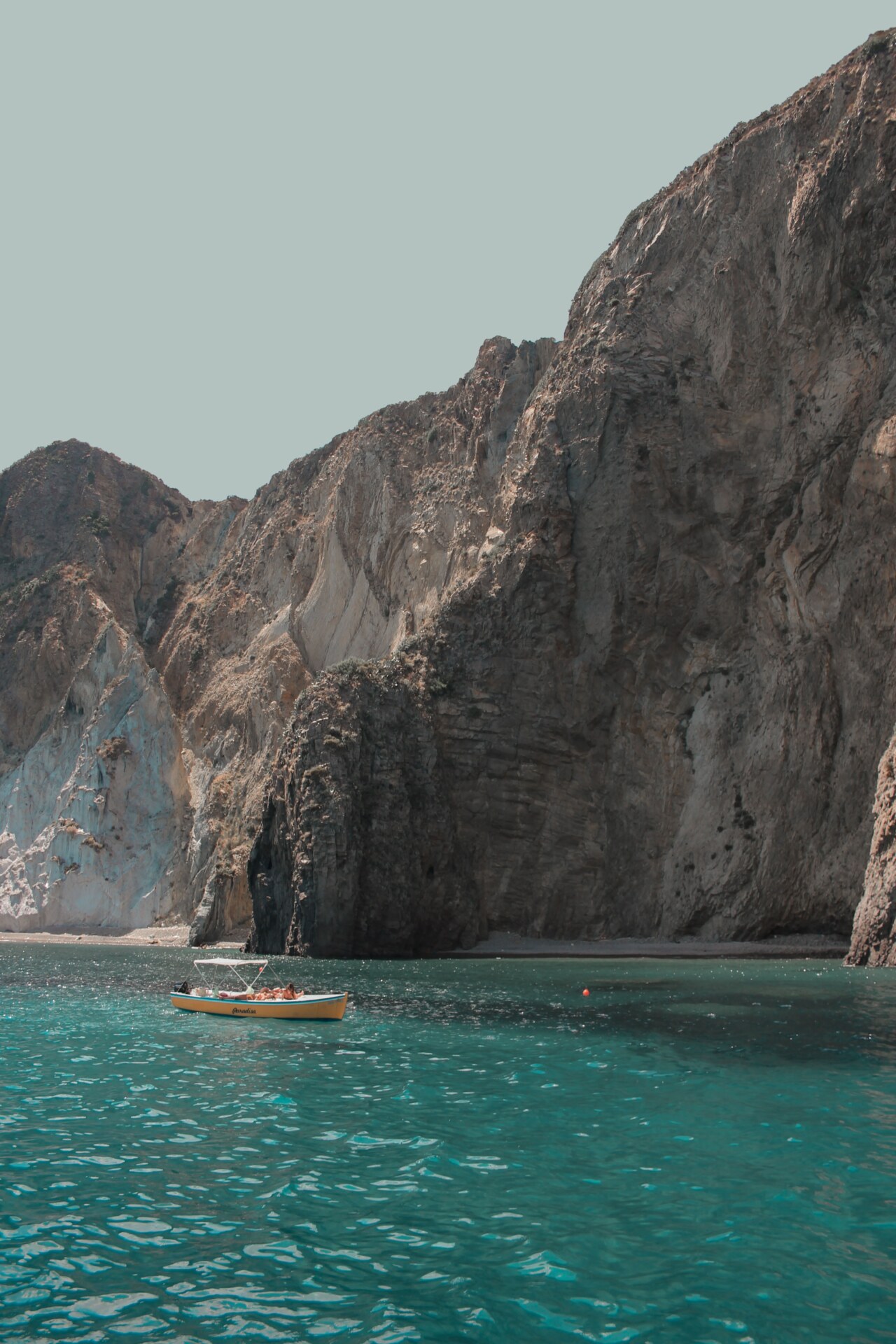
Ponza
Sant’Angelo della Polvere (Veneto)
The Venetian lagoon is home to 118 small islands, making up about a quarter of Italy’s total islands. But many of these are now abandoned, once the sites of convents and monasteries.
One such example, Sant’Angelo della Polvere, took its name from its history as an armory since 500 AD. Before its military function, the island housed a convent–although the nuns, too, were forced to leave. When the wives of local fishermen on nearby islands Pellestrina and Malamocco realized that it had been a particularly scarce season for fish, they had investigators from the Republic of Venice follow their husbands’ ships. They found that the local fishermen would stop at Sant’Angelo della Polvere on their way home, offering food to the nuns in exchange for “grace”–what some perceive to be sexual favors.
Despite its sordid history, today, Sant’Angelo della Polvere is little more than yet another desolate island in the lagoon. Gioele Romanelli, Venetian hotelier and co-founder of online guide Inside Venice, views it as a sign of what could become of Venice if we’re not careful.
“I see that island as a warning for the future,” he says. “We have already seen this in some way with our own eyes during COVID, when Venice, Florence, Rome, our very own cities, emptied out.”
Inside Venice is a project dedicated, in fact, to the opposite of this, to the idea of authentic and sustainable tourism. The goal, Romanelli notes, is to create a type of tourism that brings only positives to all, instead of the current situation–an industry that brings advantages to few and disadvantages to many. Without this growing approach, Romanelli worries once again that Venice could become a place devoid of tourism, so battered by its effects that it becomes impossible to live in.
But as tourism in Venice continues to pose problems for the city, Jean-Paul Morselli, the director of Classic Boats Venice, sees more and more tourists seeking out unusual experiences. That includes visiting some of the lagoon’s lesser-known or more remote islands, like Poveglia, of spooky stories. Legend has it that Poveglia, once home to a psychiatric hospital, was the site of unsavory experiments on patients at the hands of a doctor who was plagued by the island’s ghosts. The boat rental company now offers tours around the area, with the goal to debunk some of these myths.
“We feel like we’re warriors protecting the Venetian branding,” Morselli said. “A lot of stupid stories get out there about the island and what it represents. People say Poveglia is a haunted, spooky island, and it’s not–all those stories you hear about the island are not true.”
While Classic Boats Venice allows tourists to drive their own boat or charter a driver, Morselli notes that exploring the unexplored can be difficult on your own. Navigating certain parts of the canal requires a flat-bottom boat. And the reality is, without a boat at all, most of this cannot be done.
“Having your own boat in Venice is freedom, it’s fun,” he said. “You’re able to see and get close to lesser-known islands.”
But Venice’s uninhabited islands–or almost uninhabited islands–show how islands can remain in use for years if they have a purpose, or peter out because of inaccessibility. Morselli points to examples of both. On the island of Mazzorbetto, next to Mazzorbo, fishermen maintain their things, families have plots of land going back hundreds of years, and there’s even a camp in the summer. It’s only accessible by boat, and the Venetians don’t want visitors.
Then there’s Vignole, near La Certosa and Sant’Erasmo. Just over 50 people live on the island, and a bridge connects one part of it with the other. But year after year, young people move away, in search of a different style of life. And Morselli wonders whether, at some point, it will become completely abandoned altogether.
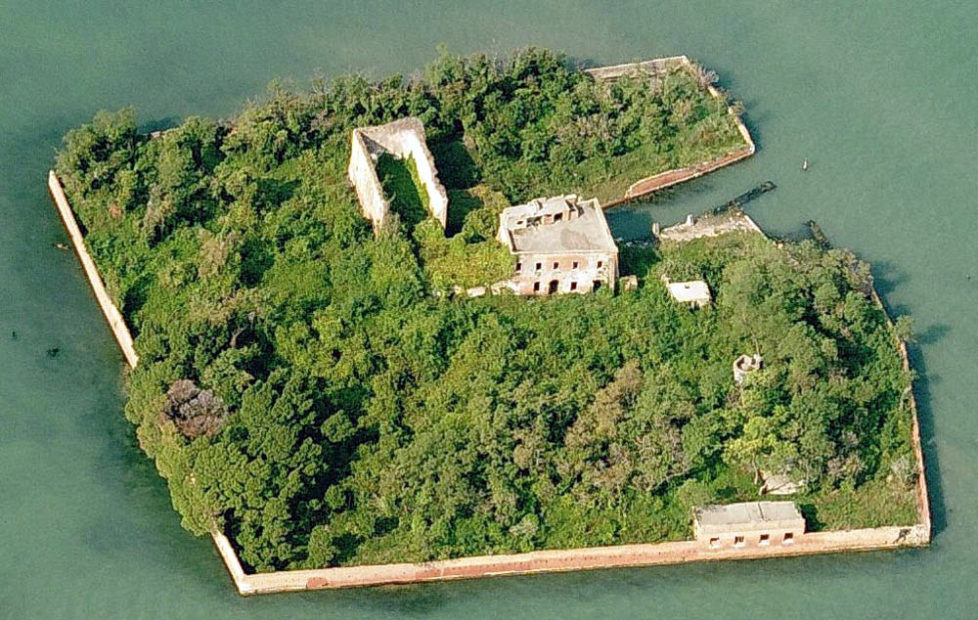
San Giorgio in Alga
Arcipelago della Maddalena (Sardinia)
If there’s one island you’ve heard of on this list, it’s likely Sardegna’s Budelli, famous for its Spiaggia Rosa, or pink beach. It’s also famous for its caretaker, Mauro Morandi, who lived on the island as its only resident for 32 years. A former physical education teacher, he came to Budelli in 1989 with friends. While there, a unique opportunity arose: the previous caretaker was about to retire. Did Morandi want his job? He very much did.
But after years on the island, days spent with Morandi working to “clear its paths, keep its beaches pristine and teach summer day-trippers about the ecosystem,” per The Guardian, the Parco Nazionale dell’Arcipelago di la Maddalena decided it was time for the caretaker to go. The dispute, in large part, centered on whether changes to Budelli’s residence were made lawfully, as well as the national park’s decision to demolish his house in favor of turning the island into a “hub for environmental education.” A petition with 18,000 signatures briefly saved Morandi’s spot, but eventually, in 2021, he decided to leave, seeing the writing on the wall.
Still, the Maddalena archipelago, a group of 60 islands off the northeast coast of Sardinia, continues to capture public attention–even without Morandi’s presence. Bruno Useli was born in La Maddalena and has spent his working career there, always in the field of tourism and often out on the sea. When he takes tourists out for the day, they tend to ask for the usual famous places–Budelli or Santa Maria, for starters.
“We always propose alternatives,” Useli said. “We always try to show the secluded coves, the uninhabited places, places less well-known but no less beautiful. We don’t want to focus only on those three or four coves. The ocean is beautiful everywhere.”
But increasing numbers of visitors to La Maddalena have made it difficult to regulate tourism and overcrowding. From May to August, the influx of people creates a bit of chaos, Useli says. Stats bear this out: with six million visitors, 2022 was a record year for tourism in Sardegna–four and a half million of those came from June to September.
And while they aren’t immune to tourism, Sardegna’s uninhabited islands have one advantage. At night, a quiet settles, and, on land, no one remains. Useli just hopes it stays that way.
“We need to leave something wild, something remote,” Useli said. “A deserted island helps you dream of a certain kind of life.”

Arcipelago della Maddalena


